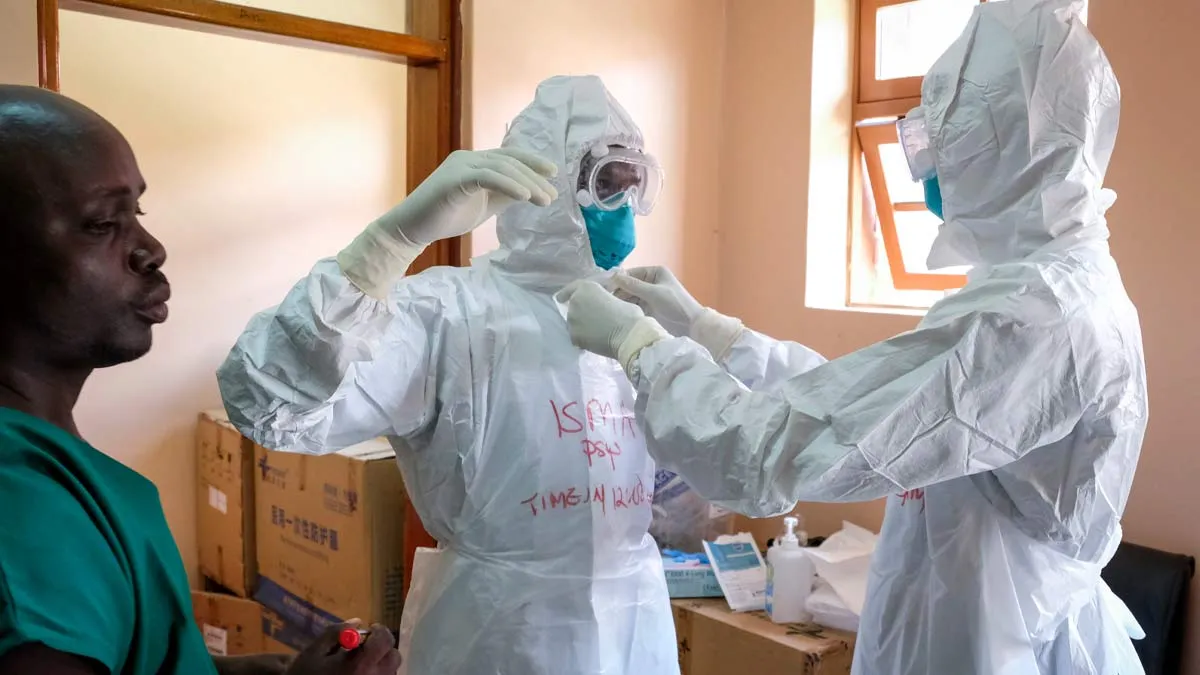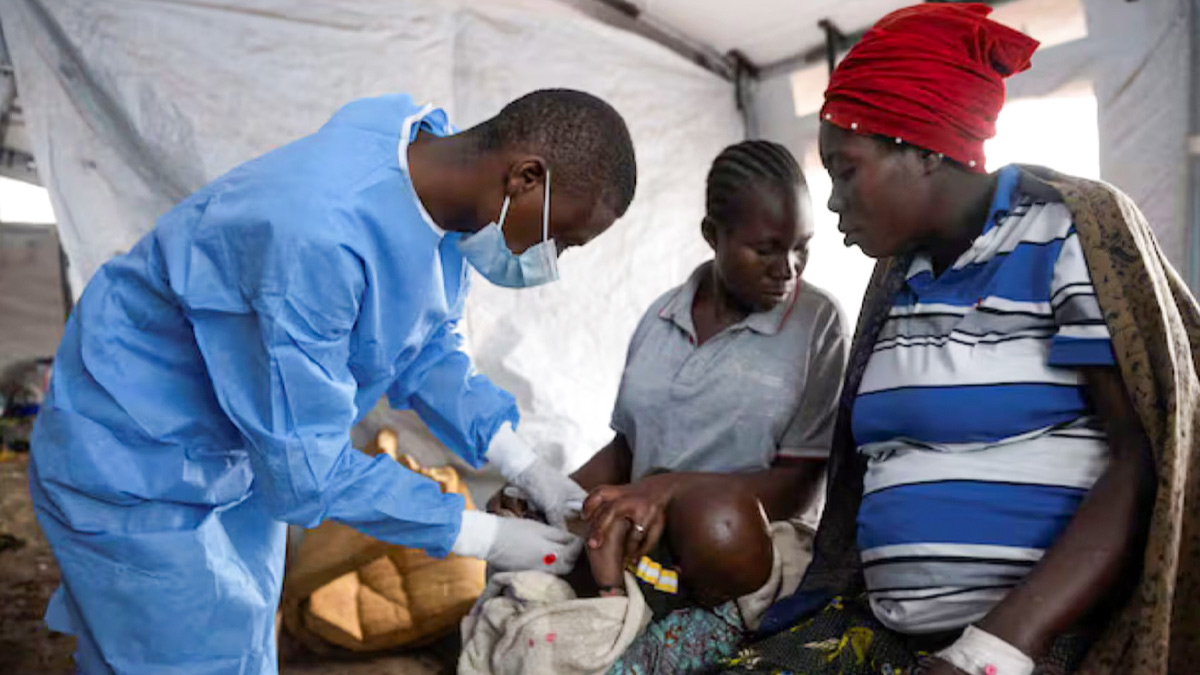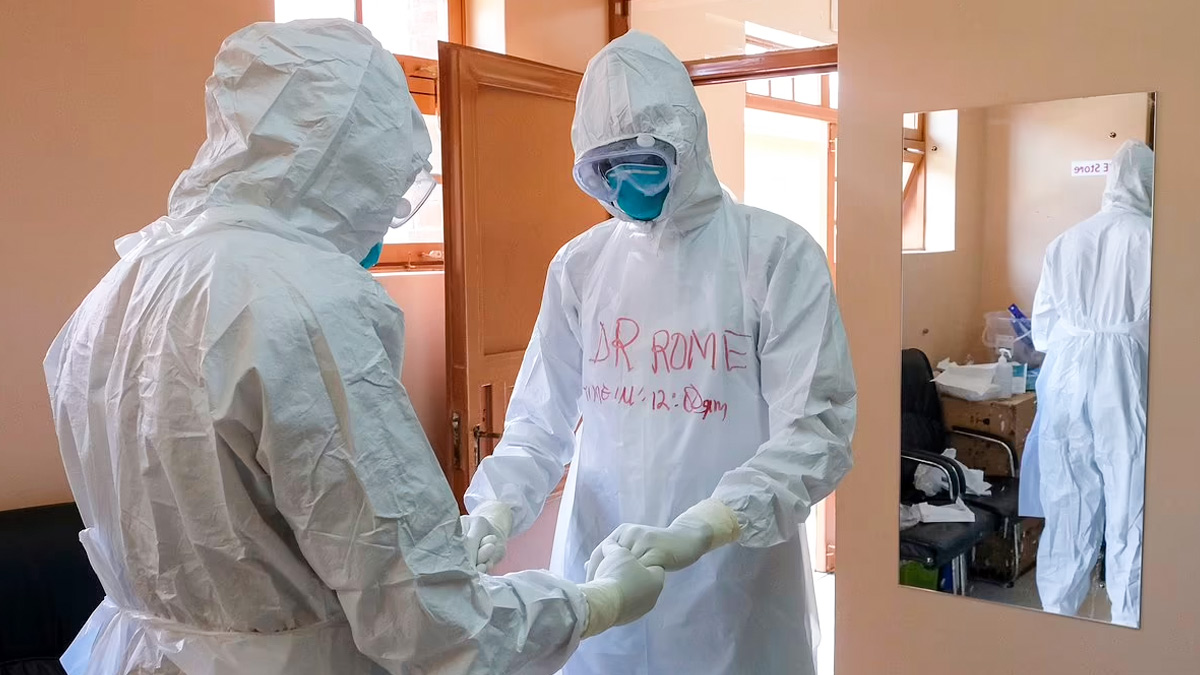
A strange and unsettling illness has struck Uganda’s Bundibugyo district, leaving hundreds of people, particularly women and young girls, shaking uncontrollably. Known locally as “Dinga Dinga,” which translates to “shaking like dancing,” this mysterious condition has left the region on edge. Health officials report that around 300 people have been affected, experiencing severe symptoms such as body tremors, high fever, and intense chills. Although there have been no reported deaths, the outbreak has raised concerns among both locals and health authorities.
Table of Content:-
Symptoms and Impact on Daily Life
The condition, though localized to Bundibugyo, is distressing for those affected. Patients describe feeling completely incapacitated by the shaking, which makes basic activities like walking or sitting nearly impossible. The violent shaking is often accompanied by weakness, fever, and chills, leaving individuals feeling exhausted and paralyzed.
One patient shared their terrifying experience with The Monitor, a local Ugandan magazine: “I felt weak and got paralyzed, with my body shaking uncontrollably whenever I tried to walk.” Such accounts highlight the debilitating nature of the illness, which disrupts not only physical health but also daily life and livelihoods.

Medical Response and Investigations
Dr Kiyita Christopher, the district health officer, stated that samples from affected patients have been sent to the health ministry for further analysis. As of now, the illness remains under investigation, with health experts working to identify its cause. Dr. Christopher reassured the public that the disease is typically treatable with antibiotics, and most patients recover within a week.
“Patients usually recover within a week,” Dr Christopher noted. Despite this, the unexplained nature of the disease and its sudden onset have left the community worried.
Also Read: Poliovirus Detected in Wastewater Across Spain, Germany, and Poland: Key Facts You Need to Know
Turning to Herbal Remedies
In the face of this unexplained outbreak, many locals are resorting to traditional herbal medicines to ease symptoms and protect themselves from the illness. However, health officials have expressed concern over this practice, warning that herbal remedies lack scientific evidence and may not be effective.
“There is no scientific evidence that herbal medicine can treat this disease,” Dr. Christopher said, urging people to seek treatment from established health facilities instead of relying on unproven methods. Despite these warnings, fear and a lack of understanding of the disease have driven many to alternative treatments.

Connections to Other Outbreaks in the Region
The emergence of Dinga Dinga comes amid a series of health crises in the region. Earlier this year, Uganda faced an outbreak of a new strain of mpox (monkeypox) that resulted in several deaths. The World Health Organization (WHO) classified the clade 1b variant as a global health emergency in August, underscoring the severity of the situation.
Additionally, the Democratic Republic of the Congo (DRC), which borders Uganda, recently experienced a deadly wave of a mysterious illness dubbed “Disease X.” This unknown pathogen claimed over 400 lives, sparking fears of a potential global epidemic. Some experts suspect that Disease X may be related to malaria, as many patients in the region have tested positive for the mosquito-borne illness.
Also Read: Delhi-NCR Chokes on 'Poor' AQI: Govt Revises GRAP Norms to Combat Toxic Air — Key Changes Revealed!
Underlying Health Challenges
The recurring outbreaks in Uganda and neighboring regions are exacerbated by underlying health challenges. High levels of malnutrition, low vaccination rates, and inadequate healthcare infrastructure leave populations, particularly children, vulnerable to various diseases. Infections like pneumonia, measles, and influenza are widespread due to these conditions, making it difficult for communities to respond effectively to new health threats.
Future Steps and Public Awareness
Health officials in Uganda are prioritizing investigations into the Dinga Dinga outbreak to identify its cause and develop effective treatments. In the meantime, raising awareness and encouraging proper medical care are critical steps in managing the crisis. Public education campaigns can help dispel myths around herbal remedies and emphasize the importance of seeking care from trained healthcare providers.
Authorities also stress the need for improved healthcare infrastructure and disease monitoring systems to respond more effectively to future outbreaks. Given the region's vulnerability to infectious diseases, proactive measures, including vaccination programs and better nutrition, could help mitigate future health crises.
Bottomline
The mystery “Dancing Disease” in Uganda is a reminder of how vulnerable communities can be to sudden health crises. While the cause of Dinga Dinga remains unknown, the combination of scientific investigation and public health efforts offers hope for managing the outbreak. Until then, locals remain cautious, hoping for answers that will allow them to return to their daily lives without fear of the uncontrollable shaking that has taken hold of their community.
Also watch this video
How we keep this article up to date:
We work with experts and keep a close eye on the latest in health and wellness. Whenever there is a new research or helpful information, we update our articles with accurate and useful advice.
Current Version